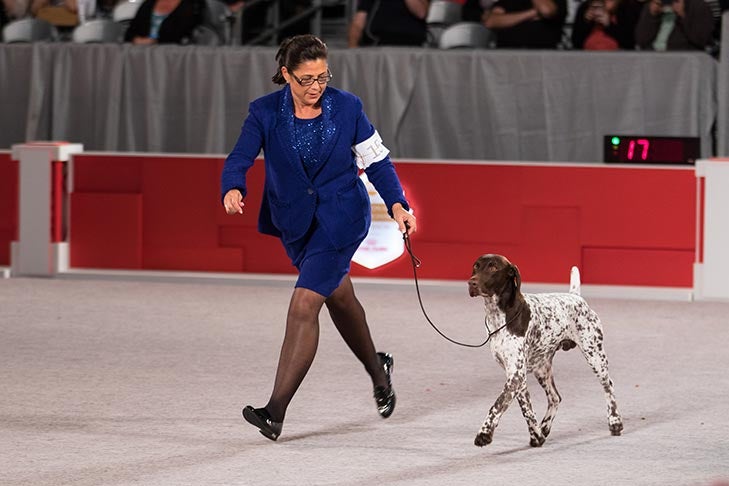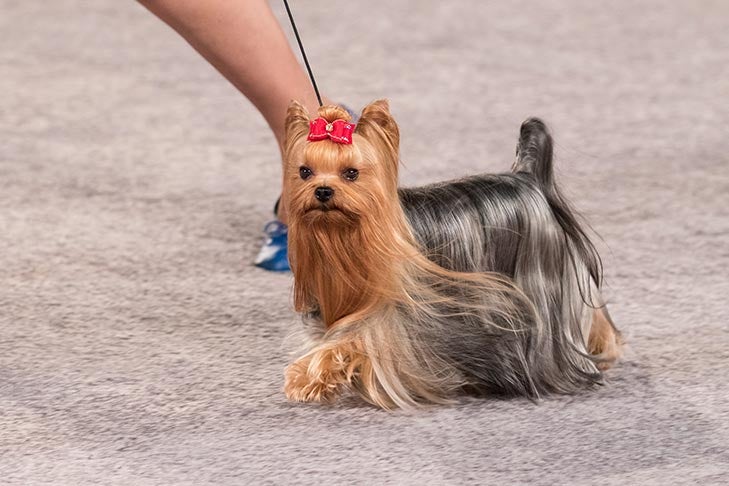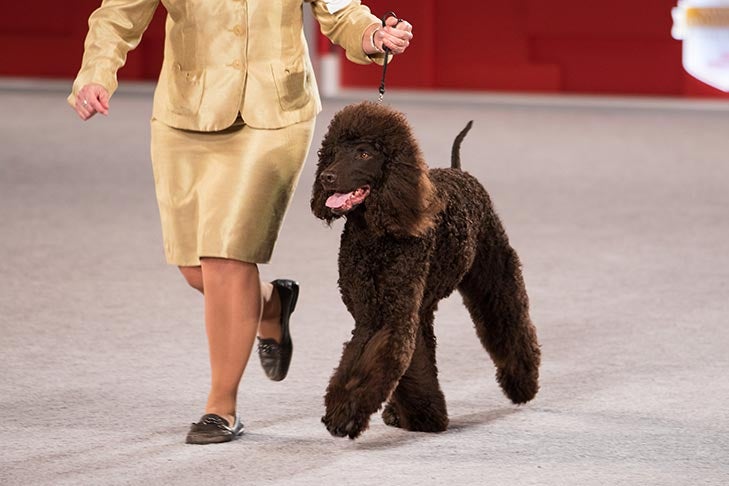
When watching a dog show at home, the routine may look easy. The handler leads the dog around the ring, stops, and the dog stands like a statue. How challenging could the competition be? But if you’re a newcomer with a wiggly puppy or have exhibited for a while but would like to notch a few more wins in your dog’s collar, you can enroll in handling classes. These lessons prepare you and your dog to compete in the ring and earn points toward your dog’s championship title.
Although some people make the job look easy and participate in this sport as a professional career, no one was born knowing how to pilot a dog to the finish line. Everyone who competes begins with the basics. Handling classes cover both getting started and fine-tuning the details. With the help of an experienced instructor, plus time, patience, and practice, you’ll learn the dos and don’ts of dog showing.

What Will You Learn in a Conformation Handling Class?
The best part of attending handling classes is building a lifelong bond with your dog. In this casual setting, you’ll discover how your dog learns best. Does food motivate them to please you? Will they value verbal praise over tasty treats? Or do they prefer a few love pats behind the ears or quick rubs on the chest?
In a series of classes, you’ll learn how to present your dog’s best attributes and enhance their ring presence. Your dog may be a beautiful example of the breed standard. But, if they don’t like being in the ring, their road to a CH title will be bumpy. You’ll also learn:
- Ring procedure: what to do and when
- The correct way to hold and manage the show lead
- How to move your dog on the show lead at the right speed for its breed
- How to stack your dog for the judge’s examination
- How to show your dog’s bite
- How to teach your dog to pay attention to you rather than the other dogs competing
At What Age Can Your Dog Start Handling Classes?
Longtime breeders begin stacking their puppies as soon as they stand up. You can start introducing your puppy to a leash and staying in place as soon as you bring them home. When you contact your handling instructor, ask what age your dog can join the class. Many instructors recommend beginning classes at around 4 months old.

Puppies can vie for championship points and compete in AKC conformation shows at 6 months. For practice at shows, young dogs can participate in a 4- to 6-month beginner puppy competition and earn points toward a Certificate of Merit title or a Puppy of Achievement certificate.
If you have an older puppy or adult dog, it’s not too late to sign up for classes. Dogs can compete for a championship at any age.
How Do You Find a Handling Class?
If your breeder lives nearby, they may be able to give you some beginning handling tips or recommend a qualified handling instructor.
You can also contact your local kennel club to locate a class. The dog show superintendent may also list courses in your area, or you can ask other puppy owners or a veterinarian for class recommendations.
Once you find a class, speak with the instructor before attending your first session. You’ll want to verify the time, location, schedule, and cost of the class, along with any special instructions. Confirm if there are any skills your dog should already know prior to participating in classes and ask if they offer different classes based on a handler’s experience level.
While anyone can lead a handling class, it can be helpful to ask about the instructor’s dog show experience. You can also ask about how they communicate with students. Are they positive and encouraging or offer instruction rather than just putting students through practice sessions? How do they approach troubleshooting any challenges their students encounter in the ring? When in doubt, ask if you can sit in on a class without your dog to see the instructor’s methods firsthand.
What Should You Bring To Class?

Always arrive at class prepared to work. You’ll need:
- Poop bags
- A show lead and collar: Ask your breeder what kind of collar and lead you should use for the ring.
- Bait: Bring plenty of small, soft treats you don’t give your dog at home.
- Drinking water: Consider bringing drinking water from home and a clean travel dog bowl
Also, be sure to wear the appropriate attire when attending classes, including:
- Comfortable, washable pants: Preferably, they’ll have deep pockets on the right side to hold bait.
- Athletic shoes: Well-fitting, comfortable shoes will allow you to run or walk fast with your dog efficiently. Avoid wearing flip-flops, high heels, or heavy boots, which can hinder you from moving your dog correctly.
- Clothes with pockets: Rather than wearing a bait bag, which food can fly out of while you’re running, pockets are an easy way to keep your treats secure.
How Do You Prepare for Handling Class?
Familiarize yourself with AKC’s dog show rules and know the standard for your breed. The goal is to exhibit dogs that meet the breed standard as closely as possible. Ask your breeder or your instructor to evaluate your dog’s show potential. Nothing is more disappointing than training for the show ring only to learn later that your dog has a major or disqualifying fault.
Go to a few dog shows without your dog to familiarize yourself with the show routine. You can also watch shows on AKC.tv or check out an online course, such as Conformation for Beginners, offered by AKC Canine College. Zero in on details. How do the handlers manage the leash? What kind of show collar do they use? How do they stack a dog on a table?
While handling class helps socialize your dog to other dogs and a new environment, it can be helpful to expose them to different environments, as well as unfamiliar dogs and people, before your first class. Some familiarity with leash training is another bonus.
Be sure to avoid feeding your dog before class. All the excitement may upset their stomach and cause them to lose interest in working for treats.

Getting the Most Out of Handling Classes
Be sure to arrive to class before the start time — 10 to 15 minutes early is ideal. This will give your dog time to sniff out the environment and perhaps take a potty break. Avoid missing multiple classes in a row, as this will likely make it harder to remember what you’ve learned.
Consider joining a different conformation class once you feel comfortable with your first class. It can be helpful to work with another instructor who may offer additional tips. Plus, you’ll have another opportunity to meet other exhibitors and make new friends.
Be sure to make time to practice any skills you learn at home. Short sessions of 10 to 15 minutes work best, as it’s enough time to help your dog retain any skills learned in class without getting bored.
Training your dog may look like serious business, but the best handlers treasure this unique time they share with their dogs. Above all, it helps to remember to have fun with your dog in the ring. The best dog in any show is the one that sits on your lap or looks up at you every day with love and affection.

